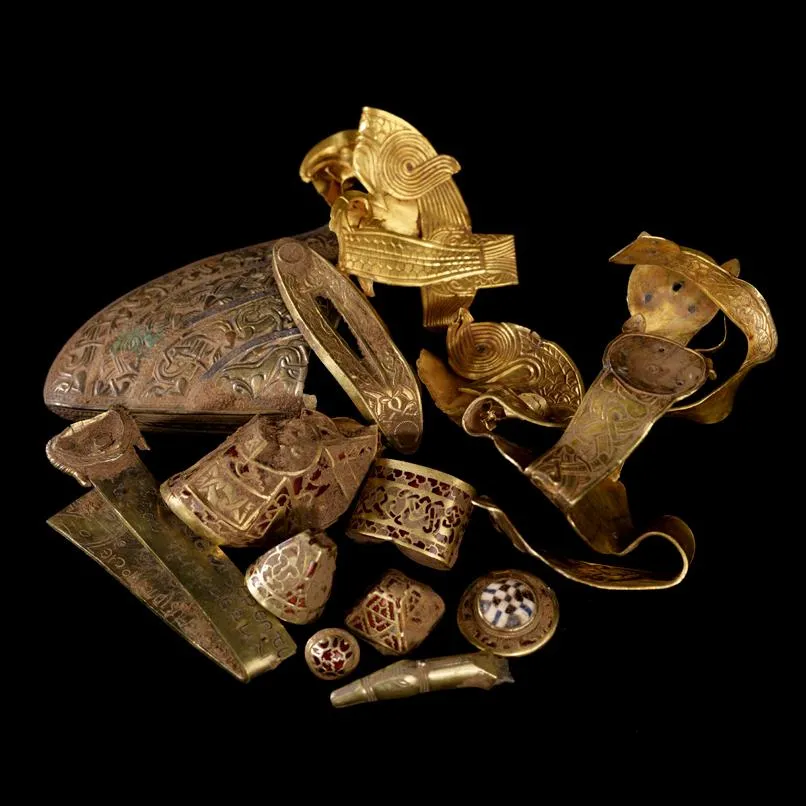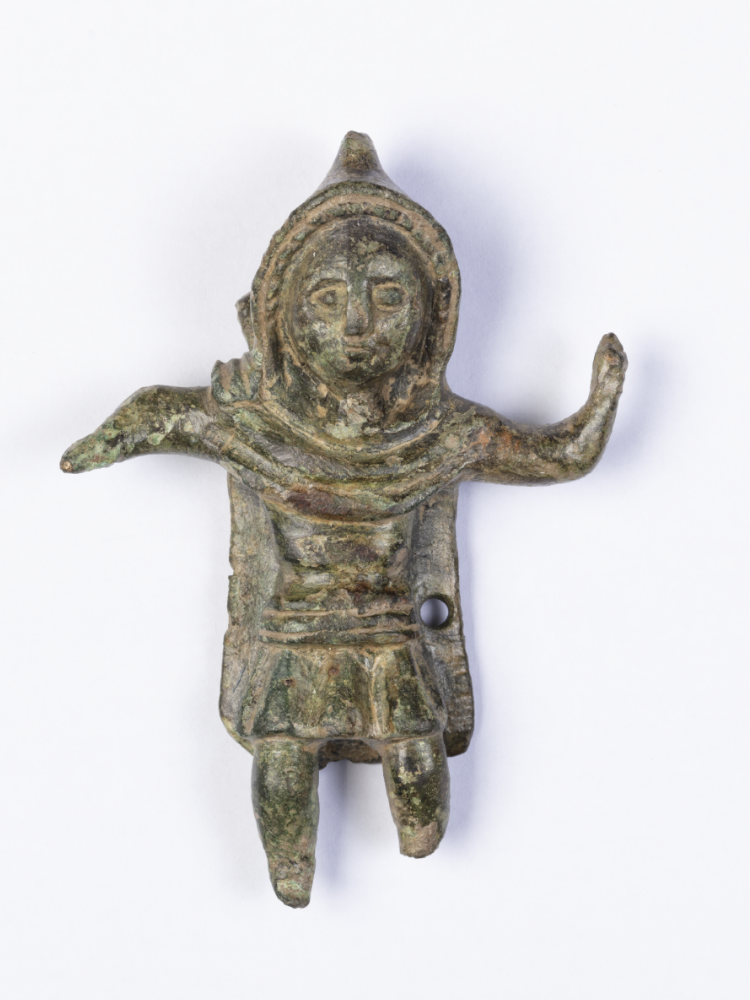To Protect Its Rare Artifacts, the U.K. Proposes Revised Definition of ‘Treasure’
New standards will ensure significant archaeological finds remain publicly accessible for study and enjoyment, the government says
:focal(858x592:859x593)/https://tf-cmsv2-smithsonianmag-media.s3.amazonaws.com/filer/a9/20/a920177d-690f-4054-8893-f33251243384/vale_of_york_hoard.jpg)
How does one define “treasure”? Does it have to sparkle? Or emerge from the earth after centuries underground?
With the creation of the 1996 Treasure Act, the United Kingdom’s government defined treasure—legally speaking—very narrowly: Finds are only designated as such if they’re more than 300 years old, made of gold or silver, or found alongside artifacts containing precious metals. (Rules vary in Scotland and Northern Ireland.) Once reported as treasure, an object becomes the property of the state; its finder is legally required to turn the artifact over to authorities for public display at national or local museums.
This limited definition excludes an array of rare artifacts, leaving them available to sell to private collectors at a major loss to the public, the U.K. government notes in a press release. To avoid such situations, culture minister Caroline Dineage has announced a major change that will expand the act’s 25-year-old definition beyond artifacts’ material qualities, making it easier for museums to both acquire and protect the country’s national heritage items, reports Caroline Davies for the Guardian.
Next year, the government will run a specialist research project aimed at developing a new working definition for treasure. The campaign will include “opportunities for detectorists, archaeologists, museums, academics and curators to contribute to options in development,” per the statement.
Crucially, the new definition will focus on the historical or cultural value of a piece rather than its material makeup. (The 1996 act’s definition drew on medieval notions of value that favor precious metals like gold and silver, according to the government.) Rare objects made out of stone, metal or bronze—including many finds dated to the Roman period—will now be classified as treasure, reports BBC News.

The world of antiquities authentication and discovery has undergone a major shift over the past 25 years, with amateur metal detecting—made more accessible by the rise of cheaper tools—exploding in popularity across Britain and Europe. In July, the British Museum announced that its Portable Antiquities Scheme (PAS) had recorded a milestone 1.5 million amateur archaeological finds since the program launched in 1997.
As amateur treasure hunters scour the history-rich European landscape for hidden gems, some stumble onto truly spectacular finds. Recent examples include a 10-year-old boy in Northern Ireland who turned up a centuries-old sword after receiving a metal detector for his birthday and two British teens who discovered 1,000-year-old silver coins.
But the popular practice also has its downsides: As Sirin Kale reported for the Guardian in June, “nighthawking,” or the practice of illegal metal detecting for historic artifacts to keep or sell on the black market, is now a common occurrence.
Authorities hope that an expanded definition of treasures will prevent many amateur finds from being illegally sold into private collections.
“The search for buried treasures by budding detectorists has become more popular than ever before and many ancient artefacts now see the light of day in museums’ collections,” says Dinenage in the statement. “However, it is important that we pursue plans to protect more of our precious history and make it easier for everyone to follow the treasure process.”

In a statement, the Chelmsford City Museum in Essex voiced its support for the revised definition. The English cultural institution has firsthand experience with the importance of legal definitions. In 2014, a metal detectorist in nearby Roxwell discovered a 2.6-inch-tall, “exceptionally rare” figurine depicting a Romano-British man wearing a hooded woolen cloak. The garment, a Birrus Britannicus (known affectionately to curators as a “Roman hoodie”), was one of Britain’s main exports during the Roman period, per a curator’s note.
Because the object was created from copper alloy, the finder was not required to turn it over to the state—and in 2017, they decided to sell it abroad. After the U.K. arts minister temporarily stopped the object from leaving the country, the Chelmsford museum was able to gather the funds to purchase the object directly. Now, it’s a star attraction of the museum’s Roman collection, “giving visitors a tangible link to past residents of the city,” according to the statement.
“We could so easily have missed out on the opportunity to keep the Birrus Britannicus figure in Chelmsford,” says chief curator Mark Curteis. “... Classifying finds as treasure based on their cultural and historical importance will give local museums a real boost, allowing objects like our Roman figurine a much greater chance of staying in the places where they have most relevance.”
/https://tf-cmsv2-smithsonianmag-media.s3.amazonaws.com/accounts/headshot/nora.png)
/https://tf-cmsv2-smithsonianmag-media.s3.amazonaws.com/accounts/headshot/nora.png)